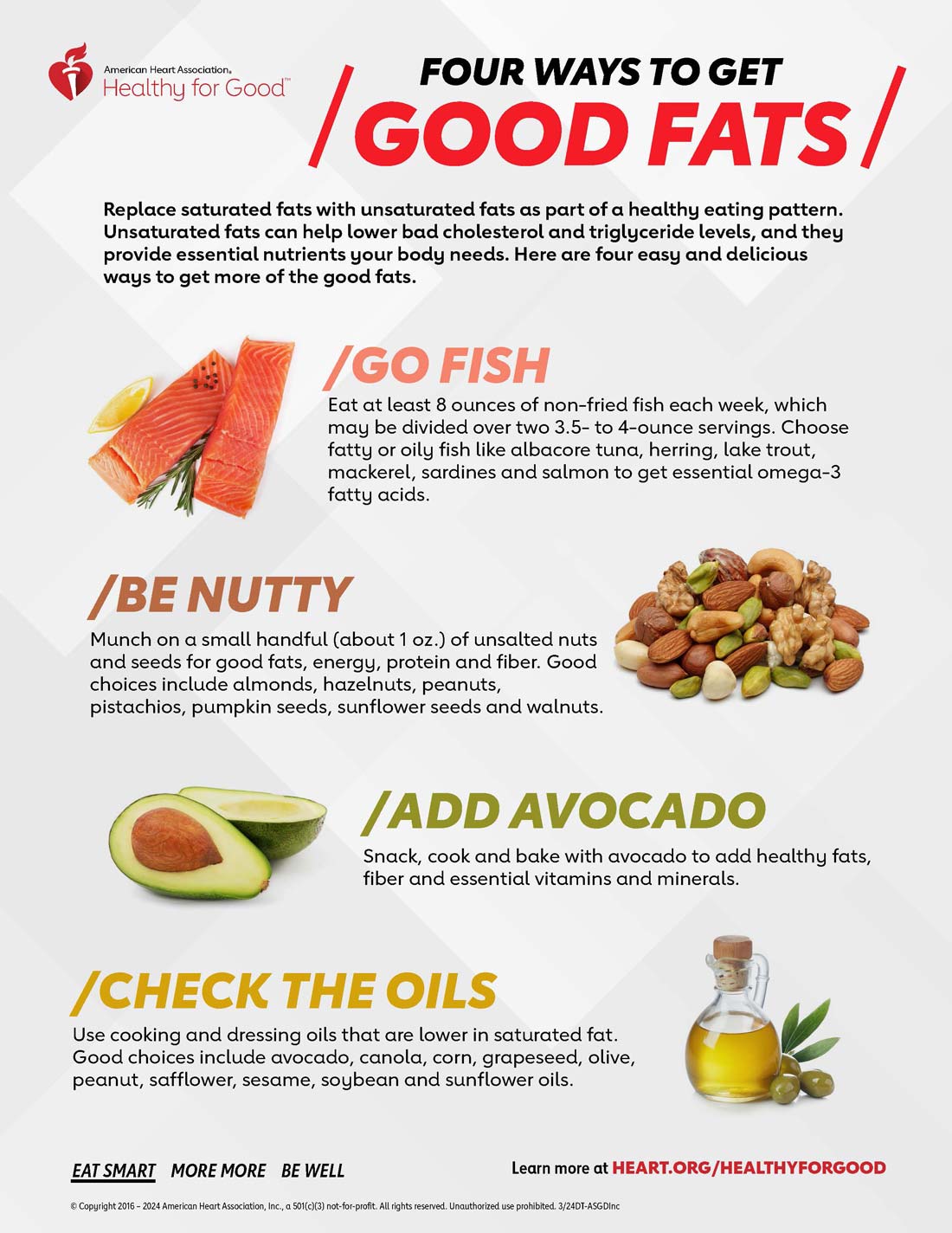What to Eat to Be Fat And Healthy? Eat nutrient-dense foods like avocados, nuts, seeds, and whole grains. Balance your diet with lean proteins and healthy fats.
Maintaining a healthy weight involves more than just consuming high-calorie foods. It’s crucial to focus on nutrient-dense options that provide essential vitamins and minerals. Avocados, nuts, and seeds are excellent sources of healthy fats and nutrients. Whole grains offer complex carbohydrates and fiber, aiding digestion and energy levels.
Incorporate lean proteins such as chicken, fish, and legumes to support muscle growth and overall health. Combining these elements helps you gain weight healthily, ensuring you receive the necessary nutrients for optimal body function. Drink plenty of water and avoid empty-calorie foods to maintain a balanced and nutritious diet.
Introduction To A Healthy High-fat Diet
What to Eat to Be Fat And Healthy? The key is choosing the right fats. Healthy fats help our body in many ways. They can boost our energy and mood. Let’s explore why fat is essential and break the low-fat myth.
Why Fat Is Essential
Fat is an important part of our diet. It provides energy and supports cell growth. Healthy fats help our body absorb vitamins and minerals. They also protect our organs and keep us warm. Here are some benefits of healthy fats:
- Boosts brain function
- Supports heart health
- Reduces inflammation
Breaking The Low-fat Myth
What to Eat to Be Fat And Healthy? Many people believe low-fat diets are best. This is not true. Our bodies need fats to function well. Healthy fats can help us stay full and satisfied. They also help maintain healthy cholesterol levels. Here are some examples of healthy fats:
| Food | Healthy Fat |
|---|---|
| Avocado | Monounsaturated fat |
| Olive oil | Monounsaturated fat |
| Salmon | Omega-3 fatty acids |
Incorporating these fats into your diet can help you stay healthy and happy. Don’t be afraid of fats. Choose the right ones and enjoy the benefits.

Credit: www.healthline.com
Key Components Of A Fat-rich Diet
Understanding the key components of a fat-rich diet is essential for maintaining both health and weight. Eating the right types of fats can support bodily functions and energy levels. Below, we explore the important elements of a diet rich in healthy fats.
Types Of Healthy Fats
Not all fats are the same. Healthy fats are crucial for the body. Here are some types of healthy fats:
- Monounsaturated Fats: Found in olive oil, avocados, and nuts.
- Polyunsaturated Fats: Present in fish, flaxseeds, and walnuts.
- Saturated Fats: Available in coconut oil, butter, and cheese.
These fats help with energy, brain function, and nutrient absorption. Avoid trans fats found in processed foods. They can harm your heart and overall health.
Role Of Omega-3 And Omega-6
Omega-3 and Omega-6 are essential fatty acids. The body needs them but cannot produce them. You must get them from your diet.
Omega-3 fatty acids are found in:
- Fish like salmon and mackerel
- Chia seeds
- Flaxseeds
- Walnuts
They support heart health, reduce inflammation, and improve brain function.
Omega-6 fatty acids are found in:
- Vegetable oils like sunflower and corn oil
- Seeds
- Nuts
They help with skin and hair growth and regulate metabolism. Balance both Omega-3 and Omega-6 for optimal health.
Best Foods For A Healthy Fat Intake
Eating healthy fats is essential for overall well-being. These fats provide energy, support cell growth, and protect organs. Let’s explore the best foods for a healthy fat intake.
Avocados: A Superfood
Avocados are rich in monounsaturated fats. These fats are good for your heart. They help lower bad cholesterol. Avocados also contain vitamins E and C. These vitamins support skin and immune health.
You can add avocados to salads, sandwiches, and smoothies. They are also great on toast. A serving size is usually half an avocado. This provides about 15 grams of healthy fat.
Nuts And Seeds: Nutrient Powerhouses
Nuts and seeds are packed with healthy fats. They are also high in protein and fiber. This makes them very filling. Popular choices include almonds, walnuts, chia seeds, and flaxseeds.
Here is a table of some nutritious nuts and seeds:
| Nut/Seed | Healthy Fat per Serving |
|---|---|
| Almonds | 14 grams |
| Walnuts | 18 grams |
| Chia Seeds | 9 grams |
| Flaxseeds | 12 grams |
Include a handful of nuts or a tablespoon of seeds in your diet. They can be added to yogurt, oatmeal, or salads.
Oily Fish: Omega-3 Champions
Oily fish are excellent sources of omega-3 fatty acids. These fats are crucial for brain and heart health. Salmon, mackerel, and sardines are top choices.
Here are some benefits of eating oily fish:
- Reduces inflammation
- Supports mental health
- Improves vision
Aim to eat oily fish at least twice a week. Each serving should be about 3.5 ounces. This ensures you get enough omega-3s.
Incorporating these foods into your diet helps you stay healthy. They provide essential fats and other nutrients. Enjoy these delicious and nutritious options!

Credit: www.etsy.com
Incorporating Healthy Fats Into Your Diet
What to Eat to Be Fat And Healthy? Healthy fats are essential for a balanced diet. They provide energy, support cell growth, and protect organs. Eating healthy fats can help you gain weight in a healthy way. Let’s explore some ways to include healthy fats in your daily meals.
Cooking With The Right Oils
Choose oils that are rich in monounsaturated and polyunsaturated fats. These are good for your heart.
- Olive Oil: Use it for salad dressings and sautéing vegetables.
- Avocado Oil: Great for cooking at high temperatures.
- Canola Oil: Perfect for baking and frying.
These oils add flavor and nutrition to your meals. Replace butter with these healthy oils for better health.
Snack Ideas: Healthy Fats On The Go
Snacking can be healthy and delicious. Choose snacks rich in healthy fats.
| Snack | Healthy Fat Source |
|---|---|
| Mixed Nuts | Almonds, walnuts, and cashews |
| Avocado Toast | Whole grain bread with avocado |
| Greek Yogurt | Top with chia seeds and flaxseeds |
| Dark Chocolate | Choose 70% cocoa or higher |
These snacks are easy to prepare and carry. They are also delicious and packed with nutrients.
Balancing Your Diet: Carbs, Proteins, And Fats
Finding the right balance of carbs, proteins, and fats is key to a healthy weight gain. Each of these macronutrients plays a vital role. This section will guide you on how to balance them effectively.
Finding The Right Balance
Understanding the right balance of macronutrients can be challenging. Here is a simple way to do it:
| Macronutrient | Daily Percentage | Role |
|---|---|---|
| Carbohydrates | 50-60% | Provide energy for the body |
| Proteins | 20-30% | Build and repair tissues |
| Fats | 20-30% | Support cell growth |
Carbohydrates should make up the bulk of your diet. Choose whole grains, fruits, and vegetables. These are healthier options compared to processed foods.
Proteins are essential for muscle growth. Include lean meats, beans, and nuts in your meals. They help in tissue repair and growth.
Fats are important too. Healthy fats like avocados, olive oil, and nuts support overall health. Avoid trans fats and limit saturated fats.
Meal Planning Tips
Planning your meals can make balancing your diet easier. Here are some tips:
- Include a source of protein in every meal.
- Choose whole grains over refined grains.
- Don’t forget to add healthy fats like nuts or seeds.
- Eat a variety of fruits and vegetables.
- Drink plenty of water to stay hydrated.
Consider creating a weekly meal plan. This helps you stay organized and ensures a balanced intake. Here’s an example:
| Meal | Food Items |
|---|---|
| Breakfast | Oatmeal with berries and nuts |
| Lunch | Grilled chicken with quinoa and vegetables |
| Dinner | Salmon with brown rice and steamed broccoli |
| Snacks | Fruit, yogurt, or a handful of nuts |
Keep track of what you eat. Adjust your diet based on your goals. This way, you ensure you are gaining weight healthily.
Healthy Fat Intake: Myths Vs. Facts
Many people think eating fat is bad. But not all fats are harmful. Some fats are good for your health. Let’s clear up some myths and learn the real facts about healthy fat intake.
Debunking Common Myths
Myth 1: All fats make you gain weight.
Not all fats are the same. Healthy fats, like those in avocados, nuts, and olive oil, can help you stay fit and healthy.
Myth 2: Eating fat causes heart disease.
Good fats, such as omega-3 fatty acids, are good for your heart. These fats can be found in fish, flaxseeds, and walnuts.
Myth 3: Low-fat diets are always healthy.
Our bodies need fats to function well. Low-fat diets can lack essential nutrients.
Understanding The Science
Our bodies need healthy fats to work properly. Fats help absorb vitamins and build cells.
- Monounsaturated fats: Found in olive oil and avocados. They improve heart health.
- Polyunsaturated fats: Found in fish and flaxseeds. They reduce inflammation.
- Saturated fats: Found in butter and cheese. They should be eaten in moderation.
Healthy fats also give you energy. They make you feel full, so you eat less. Eating the right fats can help you manage your weight.
| Fat Type | Sources | Benefits |
|---|---|---|
| Monounsaturated | Olive oil, avocados | Improves heart health |
| Polyunsaturated | Fish, flaxseeds | Reduces inflammation |
| Saturated | Butter, cheese | Should be limited |
Eating the right fats is key to being fat and healthy. Choose foods rich in good fats. Avoid trans fats found in junk food. Your body and heart will thank you!
Monitoring Your Health On A High-fat Diet
Eating a high-fat diet can be healthy if done correctly. Regularly checking your health is crucial. This helps ensure that you are gaining weight safely.
Key Health Indicators To Watch
Tracking key health indicators helps maintain a balanced diet. Here are some vital signs to monitor:
- Weight Gain: Measure your weight weekly. Aim for steady gains.
- Cholesterol Levels: Check your cholesterol levels every few months.
- Blood Sugar: Monitor your blood sugar levels regularly.
- Blood Pressure: Keep an eye on your blood pressure.
| Health Indicator | Normal Range | Frequency of Monitoring |
|---|---|---|
| Weight Gain | 0.5-1 kg per week | Weekly |
| Cholesterol Levels | Under 200 mg/dL | Every 3 months |
| Blood Sugar | 70-99 mg/dL | Monthly |
| Blood Pressure | 120/80 mmHg | Monthly |
When To Consult A Professional
Consult a professional if you notice unusual symptoms. Here are some signs to watch for:
- Sudden weight loss or gain
- Constant fatigue
- High cholesterol or blood sugar levels
- Persistent high blood pressure
Talk to a nutritionist or doctor. They can provide personalized advice. Stay informed and take charge of your health.
Success Stories: Transformations With Healthy Fats
What to Eat to Be Fat And Healthy? Eating healthy fats can help you gain weight and stay healthy. Many people have successfully transformed their bodies by adding healthy fats to their diets. This section shares some of those amazing success stories.
Real-life Case Studies
Meet John. He was too thin and tired all the time. John added healthy fats like avocados and nuts to his meals. In three months, he gained 15 pounds and felt more energetic.
Another success story is Maria. She struggled to maintain her weight. Maria started eating foods rich in omega-3 fatty acids like salmon and chia seeds. She gained 10 pounds and noticed her skin glowing.
Lessons Learned And Tips
- Eat consistently: Have meals and snacks every 3-4 hours.
- Include healthy fats: Add nuts, seeds, and avocados.
- Stay hydrated: Drink water but also consider healthy smoothies.
- Balance your diet: Combine fats with proteins and carbs.
Healthy fats are essential for weight gain. They also improve your health. Follow these tips to transform your body.

Credit: www.heart.org
Frequently Asked Questions
What Foods Are Fat But Healthy?
Avocados, nuts, seeds, olive oil, and fatty fish like salmon are healthy high-fat foods. They provide essential nutrients and support heart health.
What Foods To Eat To Gain Healthy Fat?
To gain healthy fat, eat avocados, nuts, seeds, fatty fish, olive oil, full-fat dairy, and dark chocolate. These foods provide beneficial fats and nutrients.
What Can I Do To Become Fat And Healthy?
To gain weight healthily, eat nutrient-dense foods, exercise regularly, stay hydrated, get enough sleep, and manage stress.
What Is The Healthiest Fat To Eat?
The healthiest fats to eat are unsaturated fats. These include monounsaturated and polyunsaturated fats found in olive oil, avocados, nuts, and fish. These fats can improve heart health and reduce inflammation.
Conclusion
Eating the right foods can help you gain healthy weight. Focus on nutrient-dense choices like avocados, nuts, and lean proteins. Balance is key for achieving your health goals. Remember to consult a nutritionist for personalized advice. Embrace your journey to becoming fat and healthy with mindful eating habits.




Leave a Reply